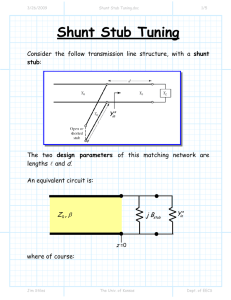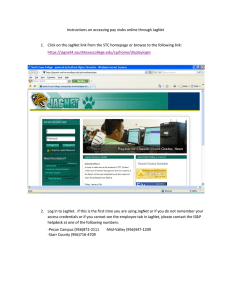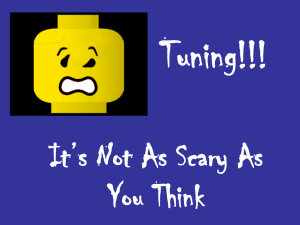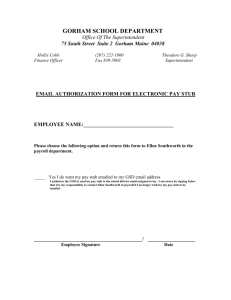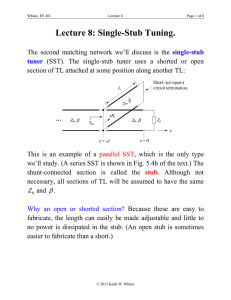5.3 – Double-Stub Tuning
advertisement
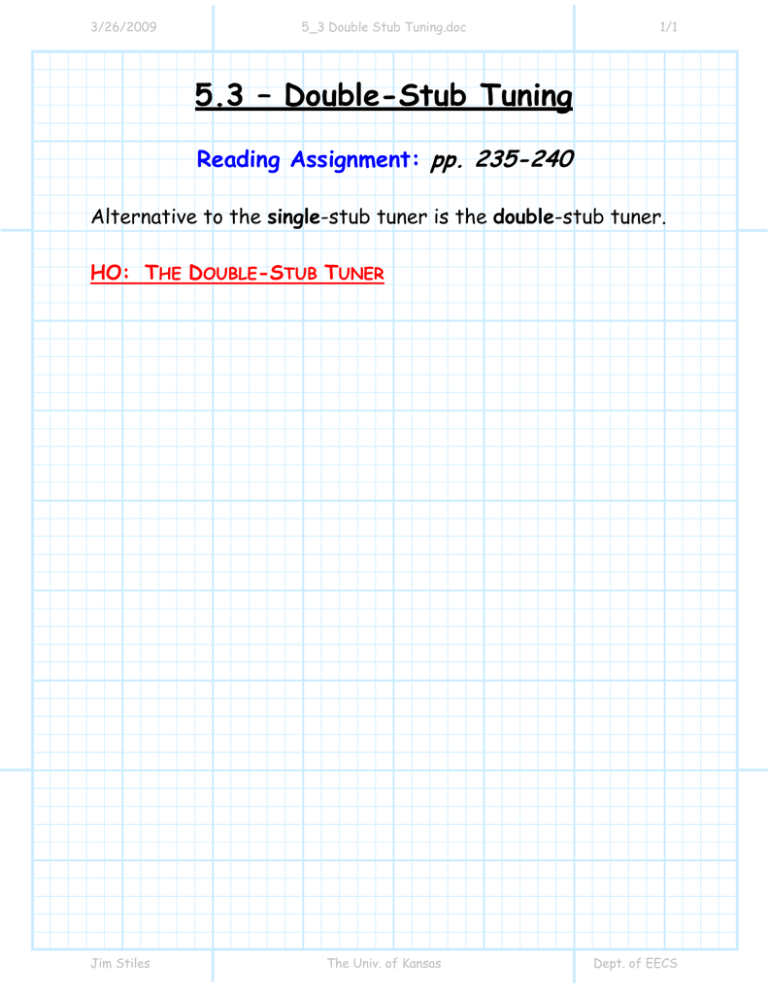
3/26/2009
5_3 Double Stub Tuning.doc
1/1
5.3 – Double-Stub Tuning
Reading Assignment: pp. 235-240
Alternative to the single-stub tuner is the double-stub tuner.
HO: THE DOUBLE-STUB TUNER
Jim Stiles
The Univ. of Kansas
Dept. of EECS
3/26/2009
Double Stub Tuning.doc
1/2
Double Stub Tuning
Another way to build a matching network is with a double stub
tuner:
Yin′′
jB2
jB1
In this design, d is a fixed length (typically, d = λ 8 ), whereas
lengths A 1 and A 2 are design parameters.
Q: Why are A 1 and A 2 design parameters, but not length d?
A: Because the lengths A 1 and A 2 can be easily altered—the
matching network is physically tunable!
Design Procedure
1. Set jB1 such that Re{Yin′′} = Y0 , i.e.,
⎧⎪ (Y + jB1 ) + jY0 tan βd
Re ⎨Y0 L
⎪⎩ Y0 + j (YL + jB1 ) tan βd
Jim Stiles
The Univ. of Kansas
⎫⎪
⎬ = Y0
⎪⎭
Dept. of EECS
3/26/2009
Double Stub Tuning.doc
2/2
or equivalently:
⎧⎪
GL + j (BL + B1 + Y0 tan βd )
Re ⎨
⎩⎪Y0 − (BL + B1 ) tan βd + j GL tan βd
⎫⎪
⎬=1
⎭⎪
where YL = GL + jBL .
Problem: There may be no solution jB1 that satisfies this
equation! There exists some load impedances Z L (YL ) that
cannot be matched with a double stub tuner.
These loads are said to lie in the scary forbidden
region (eq. 5.21). We will find that these load
impedances have real (resistive) parts that are large
(e.g., RL Z 0 ).
2. Set jB2 such that:
or equivalently:
Im{Yin′′ + jB2 } = 0
B2 = − Im{Yin′′}
The resulting input admittance is thus:
Yin = Yin′′ + jB2 = Y0
(real)
The design equations are provided on pp. 240, OR we can use a
Smith Chart (see example 5.4) to find the solutions!
Jim Stiles
The Univ. of Kansas
Dept. of EECS
